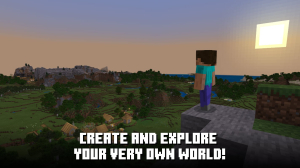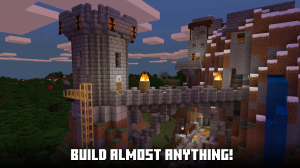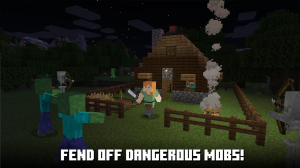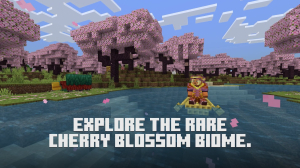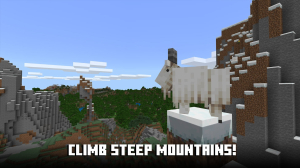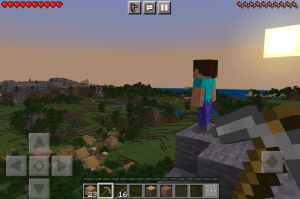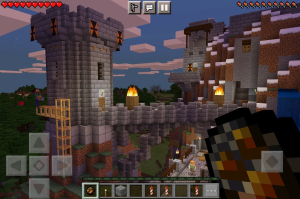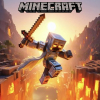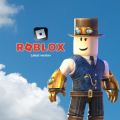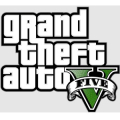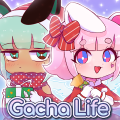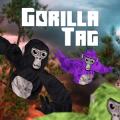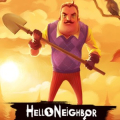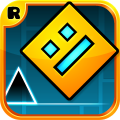Minecraft
If someone had told me, back when I first launched Minecraft, that this singular sandbox game would ultimately rewire my perception of digital play, I probably would’ve equipped my first wooden pickaxe just to scoff. Over more than a decade of gaming across genres and platforms, few titles have come close to enchanting me the way this pixelated behemoth has managed. Minecraft is not just a game: it’s a sprawling creative canvas, a survival labyrinth, a multiplayer playground, and a thriving ecosystem of community-driven content.
From Humble Beginnings to Infinite Playgrounds
At its inception, Minecraft embraced simplicity. With little more than procedurally generated landscapes and basic block types, the game asked players to explore, gather, build, and survive. The genius is precisely in that foundation: almost anyone can download and play Minecraft, installing it on their device without an encyclopedic knowledge of gaming. The genuinely remarkable aspect, though, is the world that unfolds once you do. Despite years of updates and expansions, Minecraft’s heartbeat remains tethered to creativity, freedom, and boundless potential. Unlike many games that funnel you into a linear narrative, Minecraft trusts you to set your own goals—or simply enjoy wandering, mining, and constructing for their own sake.
Unrestricted Systems, Unparalleled Flexibility
No matter your chosen platform—Windows, Mac, Linux, consoles, or mobile—it’s astonishingly easy to get started. A quick download and install is all it takes to unbox your first session. Better still, Mojang and Microsoft have experimented with broad unblocked availability, which means school and work computers often can run Minecraft via browser-based editions or third-party launcher solutions. For those seeking a free taste, the classic mode online and education editions provide a legitimate pathway, though you’ll want to invest in the base game for its full scale.
It’s rare to see a game so fiercely committed to multi-platform accessibility while maintaining performance consistency and cross-play functionality. Whether your preference is for a mouse and keyboard precision, touchscreen dexterity, or a console controller, Minecraft adapts gracefully. It’s on this foundation that a world of options—cheats, mods, resource packs, and dedicated servers—emerges, inviting an ever-evolving array of player-driven experiences.
Cheats, Mods, and the Wild West of Customization
Let’s talk about what differentiates Minecraft from nearly all competitors: the absolute explosion of community content. While some publishers lock down their titles to preserve their “vision,” Mojang embraces a different philosophy. With an active and well-curated modding community, you’re never far from discovering new gameplay elements, biomes, creatures, or mechanics. Want complex machinery with Redstone and command blocks? Automated crop farms, nuclear reactors, even functioning computers—if you can dream it, you can probably install a mod to build it.
For those less mechanically inclined, Java Edition’s support for cheats and console commands opens new realms of possibility. Equal parts educational and playful, these tools make Minecraft an ideal digital sandbox for players of all ages and skill levels. Whether you’re toggling creative mode for unrestricted building or adjusting world settings with advanced commands, Minecraft’s open nature ensures that there’s always a new twist around the corner.
Creation, Challenge, and the Lure of Infinite Worlds
While the vivid, lo-fi visuals might appear dated to uninitiated eyes, give them time. The charm of chunky blocks and dazzling sunsets works its magic before long, especially when you see what the community has done using shaders, texture packs, and other graphical mods. Minecraft notions of beauty, after all, are more about function and imagination than graphical fidelity. One stroll through a player-built medieval city or an intricate redstone-powered theme park will convince even the biggest skeptic that this is a living, breathing canvas for digital artists and designers.
Beyond pure creation, survival mode provides a pressure-cooker of resource management, risk, and reward. Navigating day and night cycles, fending off creepers, mastering crafting recipes—there’s a subtle but relentless challenge that underpins every expedition. Multiplayer servers broaden the experience further, offering everything from cooperative building factions to massive PvP arenas and custom mini-games. The flexibility here is almost intimidating: you can devote hours building the ultimate treehouse, or download a total conversion mod to experience entirely new gameplay paradigms.
Progression That Feels Earned—Never Forced
Unlike mainstream titles obsessed with progression trees and battle passes, Minecraft’s sense of advancement is entirely player-driven. This is both liberating and potentially daunting. There’s no handholding. Your first shelter feels essential; your first farm, an achievement; your trek to the Nether, a rite of passage. Every unique world, whether seeded by you or randomly generated, offers a fresh journey and endless replayability. Add friends and shared servers to the mix and the possibilities multiply exponentially, becoming something akin to a shared, evolving narrative.
Community, Education, and the Power of Sharing
An unsung pillar of Minecraft’s enduring appeal is its vibrant community. From ambitious builders revealing their designs on YouTube to coders writing new mods and fans sharing custom skins, schematic files, and in-depth tutorials, the game’s reach extends far beyond your own screen. Mojang’s deliberate support for educational editions, and their embrace of multiplayer servers, have helped transform Minecraft into a social hub as much as a digital universe.
There’s a reason it thrives even in “unblocked” environments like schools, where educators use it to teach everything from mathematics and geometry to coding and teamwork. That same flexibility makes it at home in casual family sessions, intense competition-driven clans, or solo adventures with elaborate self-imposed rules. It’s not uncommon to discover talented architects or budding programmers who honed their skills in Minecraft’s block-structured world—what other game can boast that kind of real-world impact?
Room For Growth—And Ongoing Innovation
Of course, even the greatest games aren’t immune to criticism. Minecraft has, at times, struggled with parity between its various editions, especially with new content releases reaching Java and Bedrock players at different intervals. Some elements still feel clunky: the inventory UI begs for modernization, especially on consoles. Updates, while regular, can break older mods, forcing players to scramble for compatibility fixes or wait on community updates. Despite periodic optimizations, lower-end hardware can still struggle to run large modpacks or community servers without performance dips.
Nonetheless, there’s comfort knowing that Mojang continues to iterate, introducing features like ray tracing, the Caves & Cliffs update, and a steady stream of crowd-voted content that regularly pulses energy into the scene. Whether you prefer to play purist survival or let your imagination run wild with every mod under the sun, Minecraft’s dedication to iteration and community engagement makes it anything but static.
Final Verdict: More Than a Game, a Legacy
After thousands of hours mining, building, exploring, and collaborating across platforms, I can say with certainty that Minecraft’s reputation is well-earned. More than any other title, it redefines what interactive entertainment can achieve—melding digital freedom, self-expression, challenge, and community like no rival before or since. Sure, newer games may come with flashier graphics or slicker mechanics, but it’s rare to find a world as fertile for creativity, learning, and connection as this one.
If you’re someone curious about what modern gaming at its best can feel like—or if you’re seeking a game that your imagination, not a developer, sets the limits for—then Minecraft is essential. Download it, install it, and play for a few hours. Odds are good you’ll emerge changed, equipped with new stories and a genuine appreciation for the power of a shared, interactive world.
How to Download and Play Minecraft on Different Platforms
Minecraft can be played on nearly every modern gaming device and computer, but it isn’t free outside the trial and education editions. Anyone can begin after purchasing and installing it; online connectivity is required for initial setup and multiplayer.
- Windows PC: Officially available from Minecraft.net or the Microsoft Store. Download, install, and play Java or Bedrock editions directly.
- Mac: Fully supported for the Java Edition. The download is available from Minecraft.net.
- Linux: Java Edition is supported; download the launcher from Minecraft.net.
- PlayStation 5: Available as the Bedrock Edition through the PlayStation Store.
- PlayStation 4: Available via PlayStation Store.
- PlayStation 3: No longer supported.
- Xbox Series X/S: Available through Microsoft Store (Bedrock Edition).
- Xbox One: Available via Microsoft Store (Bedrock Edition).
- Xbox 360: Only legacy edition available; no current updates.
- Nintendo Switch: Supported; download from Nintendo eShop.
- Mobile Android: Available from the Google Play Store (Bedrock Edition), sometimes with regional restrictions.
- Mobile iOS (iPhone/iPad): Available from the App Store as Minecraft Bedrock Edition.
- Chromebook: Not officially supported, but web-based and cloud versions are possible via workarounds.
- Cloud Gaming: Playable on supported cloud platforms (like Xbox Cloud Gaming) as part of Game Pass Ultimate.
To install Minecraft, download the setup or app from your platform’s app store or Minecraft.net. For Linux, follow launcher instructions. Updates generally download automatically.
System requirements for the Java Edition on PC are an Intel Core i3-3210 CPU (or AMD equivalent), 4 GB RAM, and Intel HD Graphics 4000, with Windows 7 or newer. On Android, a device with 2 GB RAM and 1 GHz+ quad-core is recommended.
Minecraft encourages mods and creative transformations on the Java version. However, official servers disallow cheats. Some mods and resource packs work on Bedrock, though with more restrictions. Use of cheats in single-player/creative is allowed.
If you're looking to play unblocked (such as at school or work), Minecraft Education Edition and browser-based variants are available, though firewall restrictions may apply. Certain cloud gaming providers also provide access where direct installation isn’t possible.
- Limitless creativity enabled by intuitive building and crafting systems
- Supports a massive community of mods and player-made content
- Flexible play modes: survival, creative, adventure, and spectator
- Accessible across a huge range of platforms, with cross-play available
- Extensive educational value
- often used for teaching coding, problem-solving, and collaboration skills
- Frequent updates with substantial new content and features
- Strong multiplayer support, including private servers, realms, and community events
- Graphics and user interface may feel dated compared to modern titles
- Difficulty tracking and updating mods after new official updates
- Inconsistent feature parity and cross-save support between editions
